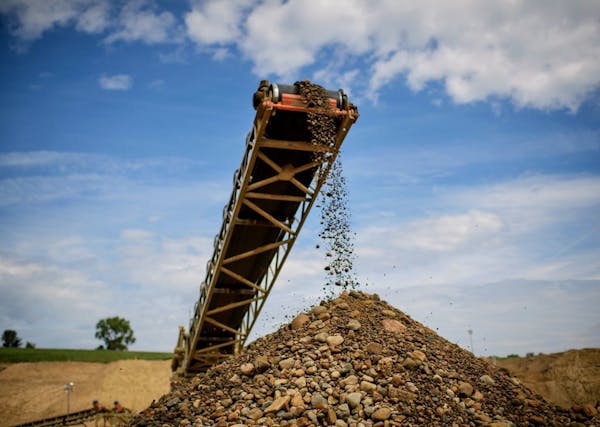Part 2 of 4 in a series, "Our changing cities."
Fairways are turning into front yards across the Twin Cities metro area as golf courses close to make way for hundreds of acres of new houses.
In just six years, the region has lost more than 900 acres of golf course land to some other kind of development, according to new data collected by the Metropolitan Council and analyzed by the Star Tribune.
It's a shift communities have wrestled with as individual courses closed, often amid opposition from golfers, but the data reveals the scope of the change since the recession.
"The land, frankly, is more valuable in my view for development than it is in continuing to run as a golf course" in those cases, said Tom Ryan, executive director of the Minnesota Golf Association. "And it's not really a golf decision as much as it's been a real business decision on behalf of the owners."
Nowhere is the disappearing golf course more apparent than the west metro, which accounts for half the golf acreage lost between 2010 and 2016. Plymouth, Orono and Shorewood saw more than 500 acres of golf course land converted to other uses during that time.
Roads slice through the former Elm Creek Golf Course in Plymouth, which is in the process of becoming the Creekside Hills housing development. Large houses are rising on the former Lakeview Golf Course in Orono, where marketing materials invite people to build their "completely customizable dream homes."
"I miss Lakeview a lot," said Jake Ehlers, a golfer from Plymouth who played the course several times a year. "It was a course I could play and score well because it was an easy course."
The picturesque, often tree-lined rolling terrain of golf courses makes them appealing to housing developers.
"These neighborhoods have definitely a much more natural feel to them," said Tony Sonnen, co-owner of Gonyea Homes, a builder working on Lakeview's redevelopment and other projects. "More mature vegetation has been preserved."
The demise of golf courses, such as Parkview's closure in Eagan, also offers chances for new development in otherwise built-out cities.
"The closure of that golf course created a large swath of developable and vacant land in a suburb that was previously more or less fully developed," said Libby Starling, the Met Council's deputy director of community development. "So it's really seen as an opportunity for them."
The Met Council takes aerial photos of the seven-county metro area every five to seven years to determine how every inch of land is being used, aided by property assessment records. It isn't perfect — the analysis relies on human judgment, sometimes correcting past imperfections — but cities across the region use the detailed maps and data to plan for the future. The Star Tribune compared the Met Council's 2016 survey with its last flyover in 2010.
The shift in land devoted to golf has been driven by a combination of too many courses and fewer golfers to play them.
The industry began aggressively building new courses in the 1990s to accommodate the retirement of the baby boomers, said Jack MacKenzie, executive director of the Minnesota Golf Course Superintendents Association.
"Then we learned as the baby boomers started retiring, golf really isn't a priority," MacKenzie said. "Or, because of the recession, they're not retiring, so they're still in the workforce. And golf has not taken a priority."
Golf lovers needn't worry, however. The metro area still has more than 20,000 acres of golf course land left. Tom Ryan of the Minnesota Golf Association said about 150 courses remain in the Twin Cities area.
Edina and St. Paul have the most golf course land among metro cities, with more than 600 acres each. But that could soon change, as St. Paul's Hillcrest Golf Club announced it will be closing.
In Minneapolis, Hiawatha Golf Club is also headed for closure to solve water drainage problems. It is expected to remain a park, however, and could include some space for golf.
We'd like to hear about what's happening in your neighborhood. Use our interactive map to look at land use changes in your area. Then share what you found in the comments below or on Facebook, Twitter or other social media platforms. Copy the URL from the map (while zoomed to your location) and paste it with your comments, as well.

FAFSA completions in Minnesota drop amid flawed efforts to update form

Wisconsin Republicans ignore governor's call to spend $125M to combat 'forever chemicals'

Man killed in Minnetonka by law enforcement started gun battle with deputies, BCA says


